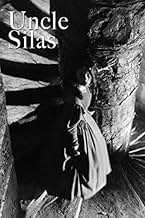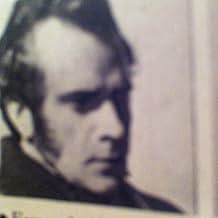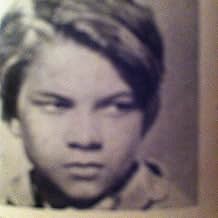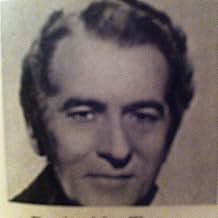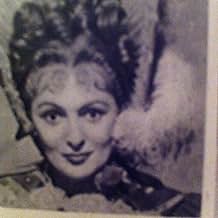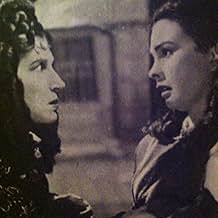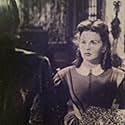Agrega una trama en tu idiomaFollowing her father's death, a teenage British heiress goes to live with her guardian uncle--who is broke and schemes to murder her for her inheritance.Following her father's death, a teenage British heiress goes to live with her guardian uncle--who is broke and schemes to murder her for her inheritance.Following her father's death, a teenage British heiress goes to live with her guardian uncle--who is broke and schemes to murder her for her inheritance.
- Dirección
- Guionistas
- Elenco
- Dirección
- Guionistas
- Todo el elenco y el equipo
- Producción, taquilla y más en IMDbPro
Opiniones destacadas
Historical melodrama ("The Man in Grey", "The Wicked Lady", "Jassy", "Blanche Fury") was a popular genre in the British cinema of the forties, and "Uncle Silas", based upon a novel by Sheridan Le Fanu, is another example. (These films had their equivalents in the American cinema, such as "Dragonwyck"). The action takes place in the mid 19th century. The heroine, Caroline Ruthyn is a sixteen-year-old heiress. When her widowed father dies, his will appoints his younger brother Silas as her guardian. In his youth Silas had a reputation as a rake, but now everyone believes him to be a reformed character. The truth, however, is that he has only abandoned his debauched lifestyle because of failing health and dwindling finances, not because of a genuine change of heart. He greets Caroline warmly, but his affection for her is only feigned, and he is secretly plotting to get his hands on her fortune.
Some melodramas from this period, such as "Jassy" and "Blanche Fury", were made in colour, and can be seen as predecessors of the more recent "heritage cinema" movement. "Uncle Silas", however, was made in black-and-white, possibly to emphasise the Gothic elements of the story. It mostly lacks the element of bodice-ripping sexual passion which is strongly implied, if not always made explicit, in films like "The Man in Grey" or "The Wicked Lady". The only character who is chiefly motivated by sexual desire is Silas's dissolute son Dudley and his passion, for his cousin Caroline, is not returned. (Far from it. Caroline loathes Dudley and has no illusions about his true nature, even though she is still under an illusion about the true nature of his father Silas).
There are certain similarities between this film and the American-made "Dragonwyck", made the previous year. Both were set at around the same period in history and both feature a beautiful, innocent brunette heroine (Jean Simmons here, Gene Tierney in "Dragonwyck") who goes to live with a sinister relative in a gloomy Gothic mansion. There is an obvious contrast between the spacious, airy Georgian stately home which Caroline inherits from her father and Silas's ramshackle, tumbledown mediaeval or Tudor manor house. (As an impoverished younger son, he presumably cannot afford anything more commodious). At first the girl is deceived as to her relative's character- in "Dragonwyck" the heroine, Miranda, even goes so far as to marry her distant cousin Nicholas- but his true nature eventually emerges and she finds herself in danger.
The difference between this film and "Dragonwyck" lies in the way it is acted. As another reviewer has pointed out the good characters- Caroline, her father and her admirer Lord Richard Ilbury- are all played straight, whereas the evil ones- Silas, Dudley and their sidekick, Caroline's former governess, Madame de la Rougierre- are all to some extent melodramatic caricatures. The main villain in "Dragonwyck", Nicholas, is not caricatured in this way. Katina Paxinou as Madame de la Rougierre perhaps goes too far over the top, and Dudley, whose role is not a large one, is a sort of bargain-basement Squire Jasper. Derrick De Marney, however, makes a splendid villain as Silas. He was only in his early forties in 1947, but looks much older, and it is difficult to believe that he is the same man who had played the handsome young male lead in Hitchcock's "Young and Innocent" only a decade earlier. On the virtuous side, Simmons makes a luminously lovely heroine, and there is a good performance from Reginald Tate as Caroline's father Austin. The devoutly Christian Austin Ruthyn is a good man, but suffers from a character defect common among good people- he is so noble and upright that he cannot understand, or even conceive of the existence of, anyone who is less noble and upright than himself.
Today, melodramas like this one can come across as dated, with their exaggerated emotion and exaggeratedly black-and-white view of the world, represented here by the contrast between the good and the evil characters. Barbara and the saintly Caroline. Yet to anyone prepared to make allowances for the differences between contemporary tastes and those of seventy years ago, a film like "Uncle Silas" can be seen as a fine example of a once-fashionable style of film-making. 7/10.
Some melodramas from this period, such as "Jassy" and "Blanche Fury", were made in colour, and can be seen as predecessors of the more recent "heritage cinema" movement. "Uncle Silas", however, was made in black-and-white, possibly to emphasise the Gothic elements of the story. It mostly lacks the element of bodice-ripping sexual passion which is strongly implied, if not always made explicit, in films like "The Man in Grey" or "The Wicked Lady". The only character who is chiefly motivated by sexual desire is Silas's dissolute son Dudley and his passion, for his cousin Caroline, is not returned. (Far from it. Caroline loathes Dudley and has no illusions about his true nature, even though she is still under an illusion about the true nature of his father Silas).
There are certain similarities between this film and the American-made "Dragonwyck", made the previous year. Both were set at around the same period in history and both feature a beautiful, innocent brunette heroine (Jean Simmons here, Gene Tierney in "Dragonwyck") who goes to live with a sinister relative in a gloomy Gothic mansion. There is an obvious contrast between the spacious, airy Georgian stately home which Caroline inherits from her father and Silas's ramshackle, tumbledown mediaeval or Tudor manor house. (As an impoverished younger son, he presumably cannot afford anything more commodious). At first the girl is deceived as to her relative's character- in "Dragonwyck" the heroine, Miranda, even goes so far as to marry her distant cousin Nicholas- but his true nature eventually emerges and she finds herself in danger.
The difference between this film and "Dragonwyck" lies in the way it is acted. As another reviewer has pointed out the good characters- Caroline, her father and her admirer Lord Richard Ilbury- are all played straight, whereas the evil ones- Silas, Dudley and their sidekick, Caroline's former governess, Madame de la Rougierre- are all to some extent melodramatic caricatures. The main villain in "Dragonwyck", Nicholas, is not caricatured in this way. Katina Paxinou as Madame de la Rougierre perhaps goes too far over the top, and Dudley, whose role is not a large one, is a sort of bargain-basement Squire Jasper. Derrick De Marney, however, makes a splendid villain as Silas. He was only in his early forties in 1947, but looks much older, and it is difficult to believe that he is the same man who had played the handsome young male lead in Hitchcock's "Young and Innocent" only a decade earlier. On the virtuous side, Simmons makes a luminously lovely heroine, and there is a good performance from Reginald Tate as Caroline's father Austin. The devoutly Christian Austin Ruthyn is a good man, but suffers from a character defect common among good people- he is so noble and upright that he cannot understand, or even conceive of the existence of, anyone who is less noble and upright than himself.
Today, melodramas like this one can come across as dated, with their exaggerated emotion and exaggeratedly black-and-white view of the world, represented here by the contrast between the good and the evil characters. Barbara and the saintly Caroline. Yet to anyone prepared to make allowances for the differences between contemporary tastes and those of seventy years ago, a film like "Uncle Silas" can be seen as a fine example of a once-fashionable style of film-making. 7/10.
Sir Hitchcock used to say : the more successful the villain ,the more successful the film .
And "Uncle Silas " got three memorable villains for the price of one. Katina Paxinou appears first as a French teacher ,but her lessons are so terrifying ( you 've got to pronounce "u " properly !say it again " uuuu"!) that her pupil gets nightmares at night ;she sings bizarre songs in French and she takes the ingenue for a promenade .....in the cemetery ...
.......where she meets the second villain(Manning Whiley ) who is none other than her first cousin ,son of sweet uncle Silas ....
.......who is the third baddie (Derrick De Marnay) and lives in a gloomy dark castle , par excellence the Gothic place ,with a roof which can give you the jitters ;uncle Silas is suave ,sly and ,little by little,reveals his true colors :he's the ogre of the fairy tales flash on the bone;
The three actors overplay ,in an outrageous way (mainly Paxinou), turns this Gothic tale into enjoyable grand guignol and combine their efforts to bump off pitiful Jean Simmons and to latch onto her valuable inheritance (hence the alternate title).Jean Simmons ,then at the beginning of a brilliant career ,and who had already a masterpiece under her belt ("black narcissus")
And "Uncle Silas " got three memorable villains for the price of one. Katina Paxinou appears first as a French teacher ,but her lessons are so terrifying ( you 've got to pronounce "u " properly !say it again " uuuu"!) that her pupil gets nightmares at night ;she sings bizarre songs in French and she takes the ingenue for a promenade .....in the cemetery ...
.......where she meets the second villain(Manning Whiley ) who is none other than her first cousin ,son of sweet uncle Silas ....
.......who is the third baddie (Derrick De Marnay) and lives in a gloomy dark castle , par excellence the Gothic place ,with a roof which can give you the jitters ;uncle Silas is suave ,sly and ,little by little,reveals his true colors :he's the ogre of the fairy tales flash on the bone;
The three actors overplay ,in an outrageous way (mainly Paxinou), turns this Gothic tale into enjoyable grand guignol and combine their efforts to bump off pitiful Jean Simmons and to latch onto her valuable inheritance (hence the alternate title).Jean Simmons ,then at the beginning of a brilliant career ,and who had already a masterpiece under her belt ("black narcissus")
This little known film disappeared into obscurity and without much comment after its release in 1947. It has resurfaced on British TV in recent years where it has been given several matinee showings. BBC readapted the Sheridan Le Fanu novel as "The Dark Angel" for its classic novel Christmas offering in 1987. In Peter O'Toole they found a much more striking eponymous villain than Derrick de Marney but in every other sense it is the monochrome 'forties version that gives me the stronger pleasure. How could if fail with a heroine as touchingly vulnerable as Jeans Simmons at her most enchanting. The pair that later directed her in "So Long at the Fair" must have known of "Uncle Silas" when they opened their film with a similar wondrous closeup to our first encounter with her here. I know nothing of the director Charles Frank apart from "Uncle Silas" but the hands of a talented craftsman are clearly at the helm of this atmospheric adaptation of the Victorian Gothic melodrama about a dastardly uncle's attempt to wrest an inheritance from his trusting young niece. It is a pity that Derrick de Marney's hammy performance does not resonate with a greater sense of evil, but there is compensation in his confidante, Madame de la Rougierre who, in the hands of Katrina Paxinau, is one of cinema's most sinister female monsters. I was not disappointed when the sequence that had so fascinated me as an impressionable adolescent, where the evil governess embarks with her young charge on a journey of deception, emerged as powerfully as ever after a gap of so many years. The clock chimes of Bartram Manor that conclude this episode, like the huntsman's cry of "Gone to Earth" in the Powell and Pressburger masterpiece are among my most haunting cinematic memories. I often wonder if young audiences of today find similar marvels in the films made for them.
Uncle Silas is directed by Charles Frank and adapted to screenplay by Ben Travers from the novel of the same name written by Sheridan Le Fanu. It stars Jean Simmons, Katina Paxinou, Derrick De Marney, Derek Bond, Sophie Stewart and Esmond Knight. Music is by Alan Rawstone and cinematography by Robert Krasker.
Upon the death of her loving father, teenager Caroline Ruthyn (Simmons) is bequeathed the family inheritance when she reaches the age of 21. In the interim she is requested to go live with her Uncle Silas (De Marney) in his ramshackle Gothic mansion. Silas was once considered unbalanced, even getting off with a murder charge when some felt he was guilty as sin, but now he seems warm towards Caroline. Is it a bluff? When Silas' weird son arrives on the scene and her fearsome former governess is found to be haunting the edges of the frames, Caroline suspects she may indeed be in danger.
A film dripping with Gothic delights, Uncle Silas is undeniably dated, as evidenced by the over acting that surrounds the excellent Simmons, but this is no Jamaica Inn. Atmosphere unbound here as Charles Frank and the brilliant Robert Krasker surround the nastiness of the plot with nightmarish visuals and scenes fit to grace any bigger budgeted horror of the decade.
The mansion is a classic fit for such a tale of heiress stalk and kill fare, though it is more run down than the opulence of something like Manderley. With 90% of the picture shot in dark and shadows, where light comes via candles and firesides, the mood of impending peril is always high. Add in a few stormy nights, mysterious rooms, locked gates and characters straight out of one of James Whale's dreams and you are good to go for bodice bedlam.
Director Charles Frank (co-writer The Late Edwina Black) had no career whatsoever, which on this evidence is baffling. OK! He wasn't able to rein in De Marney and Paxinou on this one, though in the case of the latter it's a glorious case where excess fits the nightmarish dream- scape, but some of his visual touches hint at what a good noir style director he could have been. With two nightmare sequences superb, one Brandy inspired and an array of canted angles and shadowy menaced frames filing out the piece, this shows superbly someone able to sustain foreboding atmosphere.
In some sources it is listed that Nigel Huke was co-cinematographer, but on others not so, and I certainly didn't see his name on the credits when the film rolled? But what we can see for sure is Krasker at his best. In the same year as Uncle Silas he would elevate Carol Reed's Odd Man Out to classic cinematography status, and two years later he would of course be an integral part of what made The Third Man the deservingly revered picture it is. Uncle Silas represents something of a must see for Krasker purists. It's also definitely a film that Simmons fans should seek out.
The over acting will irritate some, and the mid-point drags as it goes into gaiety mode and nearly derails the suspenseful mood that has been built up deftly. But it quickly overcomes this and gets back on track to be a cracker waiting to be gorged on by like minded film fans. It would make a nice appetiser to Ealing's brilliant Queen of Spades, or as B support to The Spiral Staircase. It was released as The Inheritance in the States, and had changes made, suffice to say that anyone interested in this movie should see only the British version. Maybe that was where Huke was involved? In the American cut? Oh well, Uncle Silas, Brit version, wonderfully kinked. 8/10
Upon the death of her loving father, teenager Caroline Ruthyn (Simmons) is bequeathed the family inheritance when she reaches the age of 21. In the interim she is requested to go live with her Uncle Silas (De Marney) in his ramshackle Gothic mansion. Silas was once considered unbalanced, even getting off with a murder charge when some felt he was guilty as sin, but now he seems warm towards Caroline. Is it a bluff? When Silas' weird son arrives on the scene and her fearsome former governess is found to be haunting the edges of the frames, Caroline suspects she may indeed be in danger.
A film dripping with Gothic delights, Uncle Silas is undeniably dated, as evidenced by the over acting that surrounds the excellent Simmons, but this is no Jamaica Inn. Atmosphere unbound here as Charles Frank and the brilliant Robert Krasker surround the nastiness of the plot with nightmarish visuals and scenes fit to grace any bigger budgeted horror of the decade.
The mansion is a classic fit for such a tale of heiress stalk and kill fare, though it is more run down than the opulence of something like Manderley. With 90% of the picture shot in dark and shadows, where light comes via candles and firesides, the mood of impending peril is always high. Add in a few stormy nights, mysterious rooms, locked gates and characters straight out of one of James Whale's dreams and you are good to go for bodice bedlam.
Director Charles Frank (co-writer The Late Edwina Black) had no career whatsoever, which on this evidence is baffling. OK! He wasn't able to rein in De Marney and Paxinou on this one, though in the case of the latter it's a glorious case where excess fits the nightmarish dream- scape, but some of his visual touches hint at what a good noir style director he could have been. With two nightmare sequences superb, one Brandy inspired and an array of canted angles and shadowy menaced frames filing out the piece, this shows superbly someone able to sustain foreboding atmosphere.
In some sources it is listed that Nigel Huke was co-cinematographer, but on others not so, and I certainly didn't see his name on the credits when the film rolled? But what we can see for sure is Krasker at his best. In the same year as Uncle Silas he would elevate Carol Reed's Odd Man Out to classic cinematography status, and two years later he would of course be an integral part of what made The Third Man the deservingly revered picture it is. Uncle Silas represents something of a must see for Krasker purists. It's also definitely a film that Simmons fans should seek out.
The over acting will irritate some, and the mid-point drags as it goes into gaiety mode and nearly derails the suspenseful mood that has been built up deftly. But it quickly overcomes this and gets back on track to be a cracker waiting to be gorged on by like minded film fans. It would make a nice appetiser to Ealing's brilliant Queen of Spades, or as B support to The Spiral Staircase. It was released as The Inheritance in the States, and had changes made, suffice to say that anyone interested in this movie should see only the British version. Maybe that was where Huke was involved? In the American cut? Oh well, Uncle Silas, Brit version, wonderfully kinked. 8/10
This moody version of Joseph Sheridan Le Fanu's classic Gothic novel is quite simply one of the most accomplished British films of the 1940's.
With cinematography reminiscent of (and rivaling)that seen in David Lean's "Great Expectations," it is a pity that this picture is not better known.
This may accrue from the fact that an American, heavily edited, and re-titled version ("The Inheritance") is the only print in U.S. circulation.
At all costs avoid this butcher job, as the 6 minutes of missing footage are very germane to the story's narrative, mood and imagery.
Jean Simmons is a reminder of yet another lost dramatic staple--a decorous, demure heroine, who speaks in complete sentences with flawless diction. Her lady like deportment combined with her unquestioned loveliness makes her a very sympathetic Lady Caroline. Mr. De Marney is similarly impressive as the sinister, titular character.
But the film belongs to Katina Paxinou as the redoubtable Madame De La Rougierre. I believe Mr. Le Fanu would approve of her performance. In any case, her first appearance, as depicted with her malignant face peering through a rain lashed window pane, is as startling an entrance as one could hope for.
Laurence Irving's art direction is superb, (and some of his sketches for this film are included in Edward Carrick's "Art and Design in the British Film," Dennis Dobson, London) fully realizing, as it does, the stories' atmospheric requirements, and amply demonstrating how superior sound stages are to location shooting.
All told, this picture stands favorably alongside Thorold Dickinson's "Queen of Spades," Terence Young's "Corridor of Mirrors," Anthony Pelissier's "Rocking Horse Winner," Leslie Arliss' "Night Has Eyes," Jacques Tourneur's "Experiment Perilous," and Martin Gabel's "The Lost Moment," as one of a small group of visually distinguished Gothic melodramas of the 1940's, and far superior to the more recent television version, which despite the welcome presence of Peter O'Toole and Barbara Shelley lacks both flavor and mood.
With cinematography reminiscent of (and rivaling)that seen in David Lean's "Great Expectations," it is a pity that this picture is not better known.
This may accrue from the fact that an American, heavily edited, and re-titled version ("The Inheritance") is the only print in U.S. circulation.
At all costs avoid this butcher job, as the 6 minutes of missing footage are very germane to the story's narrative, mood and imagery.
Jean Simmons is a reminder of yet another lost dramatic staple--a decorous, demure heroine, who speaks in complete sentences with flawless diction. Her lady like deportment combined with her unquestioned loveliness makes her a very sympathetic Lady Caroline. Mr. De Marney is similarly impressive as the sinister, titular character.
But the film belongs to Katina Paxinou as the redoubtable Madame De La Rougierre. I believe Mr. Le Fanu would approve of her performance. In any case, her first appearance, as depicted with her malignant face peering through a rain lashed window pane, is as startling an entrance as one could hope for.
Laurence Irving's art direction is superb, (and some of his sketches for this film are included in Edward Carrick's "Art and Design in the British Film," Dennis Dobson, London) fully realizing, as it does, the stories' atmospheric requirements, and amply demonstrating how superior sound stages are to location shooting.
All told, this picture stands favorably alongside Thorold Dickinson's "Queen of Spades," Terence Young's "Corridor of Mirrors," Anthony Pelissier's "Rocking Horse Winner," Leslie Arliss' "Night Has Eyes," Jacques Tourneur's "Experiment Perilous," and Martin Gabel's "The Lost Moment," as one of a small group of visually distinguished Gothic melodramas of the 1940's, and far superior to the more recent television version, which despite the welcome presence of Peter O'Toole and Barbara Shelley lacks both flavor and mood.
¿Sabías que…?
- ErroresThe length of Jean Simmons' ringlets change from one shot to the other.
- Citas
Uncle Silas Ruthyn: And here you are! One of my hopes fulfilled.
- Versiones alternativasThe American release, under the title, "The Inheritance" is six minutes shorter than the original British version, titled "Uncle Silas," after the film's source novel.
- ConexionesVersion of El hombre brutal (1947)
- Bandas sonorasMy Hat, It Has Three Corners
(uncredited)
American traditional song
Played in the background during the scene in the London hotel.
Selecciones populares
Inicia sesión para calificar y agrega a la lista de videos para obtener recomendaciones personalizadas
Detalles
Taquilla
- Presupuesto
- USD 1,000,000 (estimado)
- Tiempo de ejecución
- 1h 43min(103 min)
- Color
- Relación de aspecto
- 1.37 : 1
Contribuir a esta página
Sugiere una edición o agrega el contenido que falta

